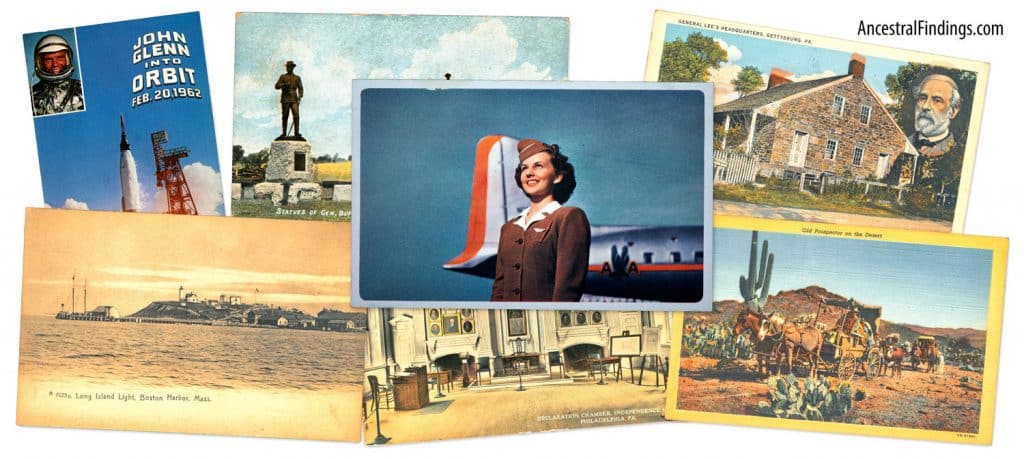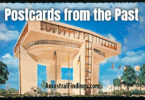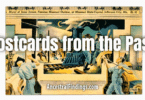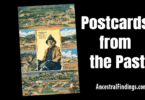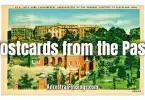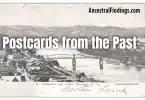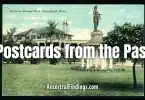Every postcard in my collection has a story to tell, and this one takes us to Forest Park in St. Louis, Missouri. On the front, you see a lively crowd gathered at the Municipal Opera, better known today as The Muny. The seats are packed, the stage is bright, and the performance is in full swing. Just looking at the card, you can almost hear the music floating through the summer night air.
On the back, the caption reads:
“The fame of St. Louis’s Municipal Opera has spread throughout the world, and visitors come thousands of miles to witness this glamorous spectacle. Night after night throughout the summer, distinguished stars present popular musical attractions in a beautiful al fresco theatre in the heart of Forest Park.”
Printed with space for a one-cent stamp, this postcard captures an era when people took great pride in local landmarks and mailed them across the country as souvenirs. The card itself was published by E.C. Kropp of Milwaukee and distributed by the Session Merchandise Company in St. Louis. It’s a classic linen card, likely dating from the 1930s or 1940s, when bold colors and textured printing were the style of choice.
For me, as a collector, this card stands out because it’s more than just a building—it’s an experience. It shows people gathered together outdoors, enjoying music, theater, and community. That’s exactly what The Muny was built for, and that’s why it has lasted more than a century.
The Birth of The Muny
The Municipal Opera was founded in 1919, making it the oldest and largest outdoor musical theater in the United States. It sits right in the heart of Forest Park, the same park that hosted the 1904 World’s Fair, a place already steeped in culture and history.
The story of The Muny began when St. Louisans decided their city needed a permanent outdoor theater for summer productions. The city cleared space in Forest Park, built a stage and seating, and within 49 days the new theater opened with a production of Aida. The speed of its construction is almost as impressive as its endurance.
From the beginning, The Muny was about accessibility. Tickets were inexpensive, and thousands of free seats were offered for every performance. This tradition continues today—hundreds of free seats are still available for anyone who arrives early enough to claim them. It’s one of the reasons The Muny has remained beloved by the people of St. Louis.
A Theater for the People
By the time this postcard was printed, The Muny was already a St. Louis institution. Every summer, families came to Forest Park for musicals and operas under the stars. Famous performers graced its stage, from Broadway stars to Hollywood actors, making it a destination for anyone who loved live performance.
Unlike indoor theaters, The Muny was designed to embrace nature. The stage was open to the night sky, framed by trees and the expanse of Forest Park. That connection with the outdoors gave every performance a sense of grandeur. When you see this postcard’s colorful crowd scene, you’re looking at thousands of people gathered for that very experience—a shared evening of art, laughter, and song, with the warm air of summer surrounding them.
Forest Park: The Setting
It’s impossible to talk about The Muny without talking about Forest Park. Opened in 1876, Forest Park is larger than New York’s Central Park and has long been the cultural heart of St. Louis. It was the site of the 1904 World’s Fair, also known as the Louisiana Purchase Exposition, which brought millions of visitors to the city. That fair introduced innovations like the ice cream cone and the electric typewriter, and it showcased art, science, and international culture.
By the 1920s, Forest Park had become a gathering place for St. Louisans, home to the St. Louis Art Museum, the Zoo, and later the History Museum. The Muny added live performance to that mix. Postcards like this one reminded people that Forest Park wasn’t just green space—it was a cultural treasure.
Opera, Musicals, and More
Though its name was the “Municipal Opera,” The Muny quickly became famous for staging musicals. Shows like Show Boat, Oklahoma!, My Fair Lady, and The Music Man were regular features. But the theater also offered operas, concerts, and even ballets.
The back of this postcard calls it a place for “distinguished stars” presenting “popular musical attractions.” That wasn’t just advertising—it was the truth. Over the decades, stars such as Cary Grant, Bob Hope, Ethel Merman, Carol Burnett, and Debbie Reynolds appeared on its stage. For many, The Muny was their first chance to perform in front of such a large outdoor audience.
And what an audience it was. At its height, The Muny seated nearly 12,000 people, making it the largest outdoor theater in the country. Performances weren’t just local events—they were spectacles that drew national attention. This postcard’s description about visitors coming “thousands of miles” to see the shows was no exaggeration.
Postcards and Pride
Why was The Muny put on a postcard? Because in the early 20th century, postcards were a way for cities to show off their achievements. A grand theater filled with thousands of people under the stars was something to be proud of. Sending this postcard was like saying, “Look at what we have here in St. Louis—our city is a cultural center worth visiting.”
The linen era of postcards, roughly the 1930s through the 1950s, was especially colorful. The bright inks made crowds and buildings pop. On this card, you can see the colorful hats of the audience, the bright stage, and the trees in the background. It was meant to be eye-catching, and it still is today.
Why I Value This Card
As a collector, this postcard speaks to me because it shows people. So many postcards show buildings or landscapes, but here you see a crowd, a community. You get a sense of what it was like to actually be there. This was entertainment before television, before air conditioning kept people inside on summer nights. Families came together, neighbors gathered, and visitors from other states made the trip. All of that energy is frozen in this single image.
A Lasting Legacy
More than 100 years later, The Muny is still going strong. Every summer, it presents a full season of musicals. Generations of families in St. Louis have grown up with the tradition of “a night at The Muny.” That continuity is rare, and it makes this postcard more than a relic. It’s a reminder of a tradition that continues today.
When I look at this card, I don’t just see a theater. I see the pride of a city, the importance of community spaces, and the power of art to bring people together. That’s the story this little piece of paper has carried for decades.
And as always, if you have old postcards laying around your house, I’d love to see them. You can send them my way. Just go to the contact link on AncestralFindings.com and let me know, and I’ll share my address with you. Maybe your postcard will become part of this collection and be featured in a future article.
